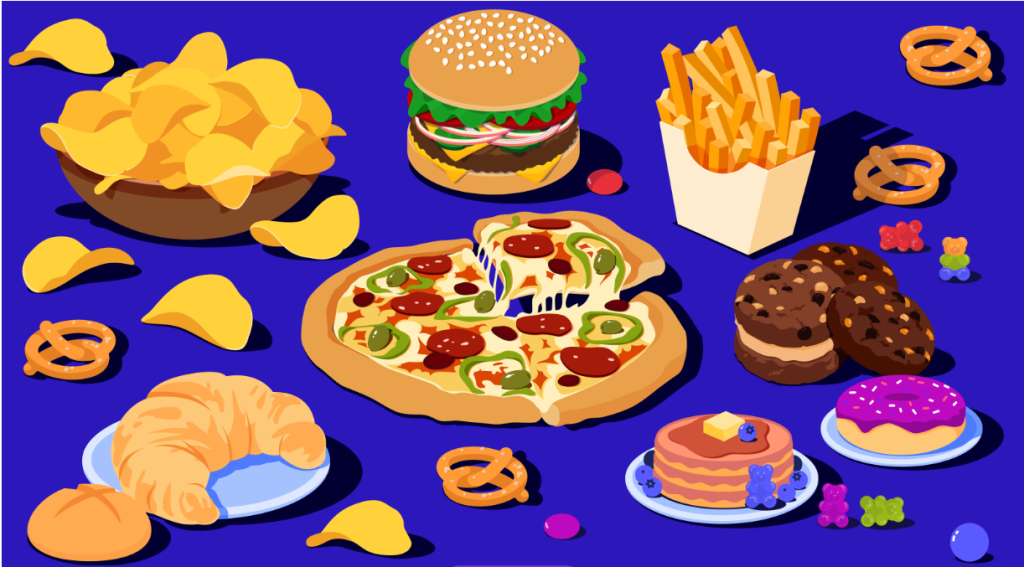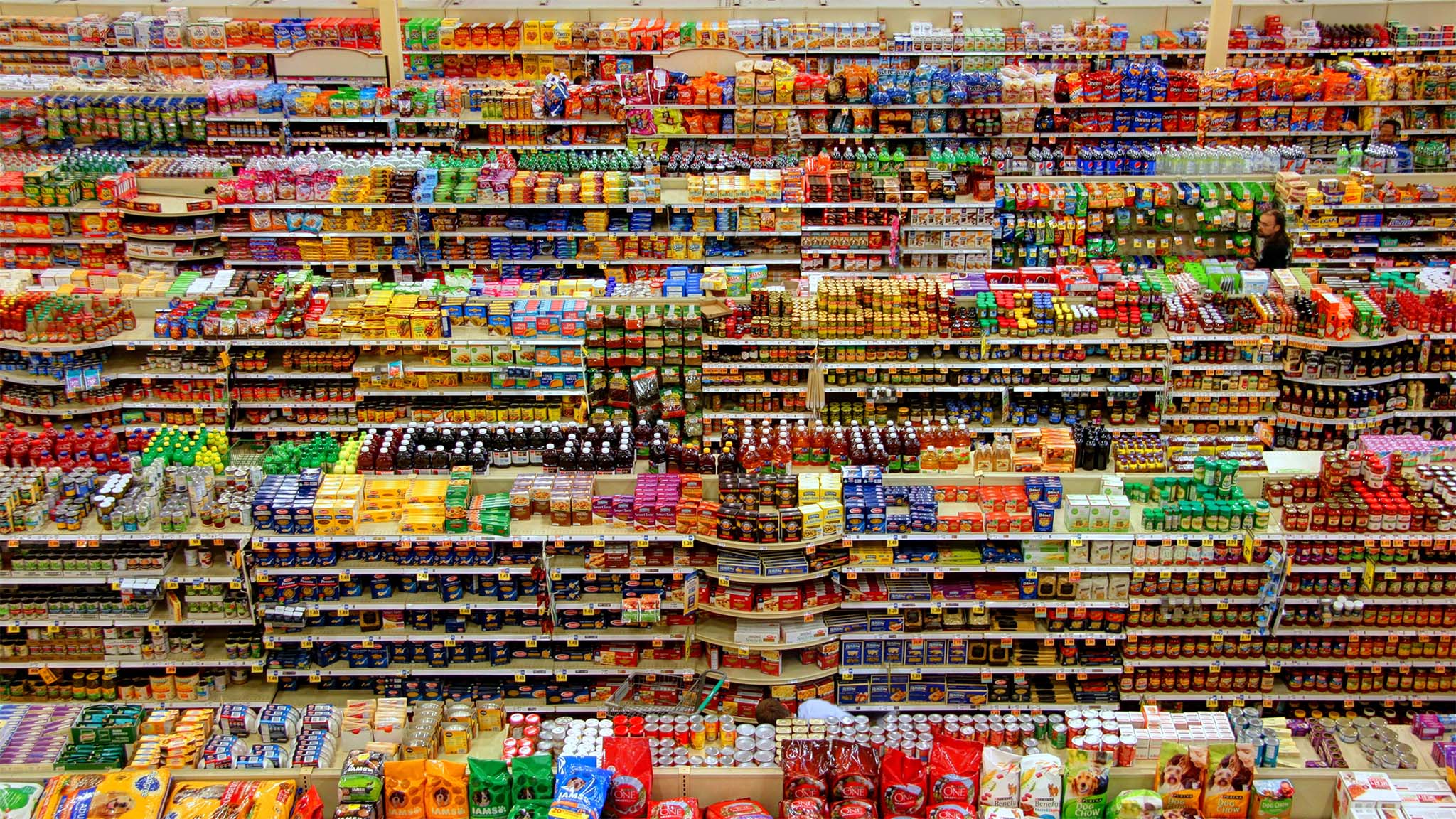We’re looking at why the ultra-processed foods debate is hotting up and the change in trends for our go-to lunch favourites, so grab a cuppa and enjoy our easy to digest insights.
Why is the government ignoring the devastating effects of ultra-processed foods (UPFs)?
Following the significantly watered down HFSS guidelines for retailers, which finally came into force last year, ultra-processed foods high in fat, sugar and salt are hitting the headlines again. This new wave of much needed activism is thanks to a recent rash of publications around the subject from experts who are spotlighting the devastating effects that over consumption of UPFs are having on our nation’s – and more crucially our children’s – health.
It’s a complex subject, brilliantly explained by chartered psychologist and nutrition expert, Kimberley Wilson in her book Unprocessed: How the food we eat is fuelling our mental health crisis. Published in February this year, the book leans on swathes of scientific studies and skilfully navigates the relationship between nutrition and brain health. It’s designed to give the UK government a long overdue wake up call.
Wilson argues that the reason we’re seeing a dramatic rise in mental illness and behavioural difficulties and a decrease in the national IQ average – not to mention the obesity and diabetes epidemic – is intrinsically linked to our diet. The UK is not faring well, and it makes for difficult reading.

What exactly are UPFs?
Essentially Wilson defines them as anything that contains ingredients that you wouldn’t usually find in your kitchen cupboard or to simplify further, a brilliant example she uses in the book, is the nutritional ravine between a glass of orange squash and a glass of water and an orange.
Perhaps an even more worrying aspect of this topic is that the food choices we make aren’t really ‘choices’. Essentially, Wilson argues that most of us know what a healthy choice looks like, but we don’t always make it. Our brains use lots of energy and are hardwired to respond to sugar and fat and that’s why UPFs or HFSS foods are so satisfying and so easy for us to get sucked into buying. It’s basically like an addiction. And THIS is exactly what the manufacturers of UPFs are capitalizing on.
She goes on to argue that arguments around the nanny state i.e. the government doesn’t want to be seen telling people what to do, fall flat when you realise that there is zero public education going on – the government are simply failing to share the alarming results of scientific studies so that people can take action. Too little is being done to quell the tide of high sugar, high fat options, often aimed at children or those restricted by time and money.
It’s a compelling read and is one of several books on the topic: Ultra-Processed People by Chris Van Tulleken explains new thinking on the classification of foods and Ravenous by Henry Dimbleby, author of a national food strategy that is yet to be implemented, explains the dreadful impact on children of our current eating habits.
In June, William Hague referenced all three of these works when he called on the Government to start treating UPFs like tobacco in his regular column in The Times. It’s somewhat reassuring to see that the subject is getting airtime with the media and that key opinion formers are starting to reignite the discussion and ask questions about why the Government is failing to act.
Unsurprisingly, a live poll at the end of the article shows that an overwhelming 92% of Times subscribers think that UPFs should be taxed.
In Other News

Consumers hungry for healthy snacks
Although the government may not have taken heed about Ultra Processed Foods, consumers are putting pressure on retailers for more unprocessed options. Sharp client Pukpip is a good example of this, having been highlighted in Asda’s Trends Book for 2023/2024, as a product with fewer ingredients and reduced processing. With Pukpip’s initial product launch being simply banana and chocolate, consumers know what to expect and can easily add more fruit into their diet via this frozen fruit snack.
The evolution of our lunch
As part of the launch of their meal deal, Waitrose has revealed a gradual change in shopper habits over the years, with the trend changing from the traditional sandwich to include wraps, sushi and more vegan options. Ten years ago, the cheese and ham sandwich was a British favourite but it has now slipped out of the top ten, meanwhile the Hoisin Duck Wrap has climbed into 5th place. But for Waitrose shoppers the prawn mayonnaise sandwich is still the go-to number one.
Another trend picked up by The Wall Street Journal and The Times this month is for restaurant customers to trade their hearty main course for simply a salad and chips. Perhaps this is a sign of the economic constraints on our spending, or maybe the world has finally cottoned on to the fact that any dish can be improved with a side of fries. With restaurants having upped their game with side options in recent years, (a bowl of cold, overcooked carrot rounds is long gone), a couple of side dishes can make for a great lunch or light dinner option. And for those of us who love to sample a bit of everything, a tapas style order of sides is surely the way to go.
Prepare yourself for the ‘C’ word
Summer has also seen the unveiling of all the Christmas specials from the supermarkets this year. The pressure to come up with new and unique offerings in the festive period has led to some interesting combos, with trending foods given that seasonal twist. Tesco has revealed a slow cooked sloe gin duck, pear shaped pork liver pate and prawn snowballs to wow the guests with. Meanwhile Waitrose is adding some glitz and glamour to their centrepieces with a shimmering Salmon Mousse, a Jewelled Stuffed Bronze Turkey Crown and a Golden Buche de Noel.




